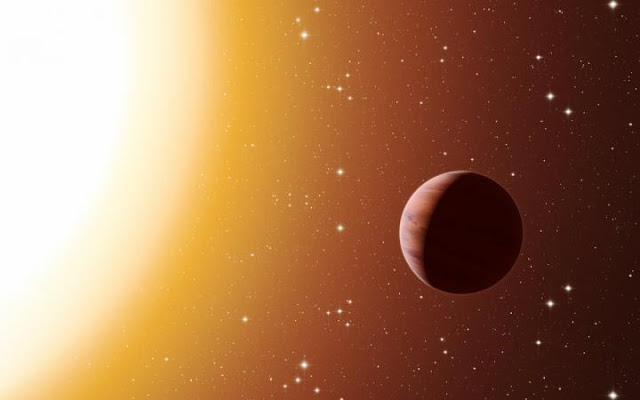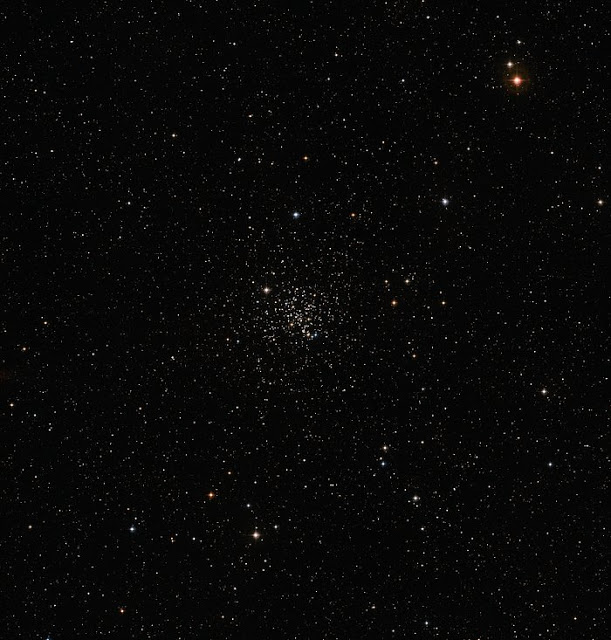

| Online: | |
| Visits: | |
| Stories: |

| Story Views | |
| Now: | |
| Last Hour: | |
| Last 24 Hours: | |
| Total: | |
Star Cluster Hosts an Excess of Hot Jupiters
This artist’s impression video shows a hot Jupiter exoplanet orbiting close to a star in the rich old star cluster Messier 67, in the constellation of Cancer (The Crab). Astronomers have found far more such planets in the cluster than expected. This surprise result was obtained using a number of telescopes and instruments, among them the HARPS spectrograph at ESO’s La Silla Observatory in Chile. The denser environment in a cluster will cause more frequent interactions between planets and nearby stars, which may explain the excess of hot Jupiters.
Credit; ESO/L. Calçada
A Chilean, Brazilian and European team led by Roberto Saglia at the Max-Planck-Institut für extraterrestrische Physik, in Garching, Germany, and Luca Pasquini at ESO, has spent several years collecting high-precision measurements of 88 stars in Messier 67 [1]. This open star cluster is about the same age as the Sun and it is thought that the Solar System arose in a similarly dense environment [2].

Credit: ESO/L. Calçada
A hot Jupiter is a giant exoplanet with a mass of more than about a third of Jupiter’s mass. They are “hot” because they are orbiting close to their parent stars, as indicated by an orbital period (their “year”) that is less than ten days in duration. That is very different from the Jupiter we are familiar with in our own Solar System, which has a year lasting around 12 Earth- years and is much colder than the Earth [4].
“We want to use an open star cluster as laboratory to explore the properties of exoplanets and theories of planet formation”, explains Roberto Saglia. “Here we have not only many stars possibly hosting planets, but also a dense environment, in which they must have formed.”
The study found that hot Jupiters are more common around stars in Messier 67 than is the case for stars outside of clusters. “This is really a striking result,” marvels Anna Brucalassi, who carried out the analysis. “The new results mean that there are hot Jupiters around some 5% of the Messier 67 stars studied — far more than in comparable studies of stars not in clusters, where the rate is more like 1%.”
This wide-field image of the sky around the old open star cluster Messier 67 was created from images forming part of the Digitized Sky Survey 2. The cluster appears as a rich grouping of stars at the centre of the picture. Messier 67 contains stars that are all about the same age, and have the same chemical composition, as the Sun.

Credit:ESO/Digitized Sky Survey 2, Acknowledgement: Davide De Martin
There are a number of possible answers to that question, but the authors conclude that this is most likely the result of close encounters with neighbouring stars, or even with the planets in neighbouring solar systems, and that the immediate environment around a solar system can have a significant impact on how it evolves.
In a cluster like Messier 67, where stars are much closer together than the average, such encounters would be much more common, which would explain the larger numbers of hot Jupiters found there.
Co-author and co-lead Luca Pasquini from ESO looks back on the remarkable recent history of studying planets in clusters: “No hot Jupiters at all had been detected in open clusters until a few years ago. In three years the paradigm has shifted from a total absence of such planets — to an excess!”
Notes:
[1] Some of the original sample of 88 were found to be binary stars, or unsuitable for other reasons for this study. This new paper concentrates on a sub-group of 66 stars.
[2] Although the cluster Messier 67 is still holding together, the cluster that may have surrounded the Sun in its early years would have dissipated long ago, leaving the Sun on its own.
[3] Spectra from the High Resolution Spectrograph on the Hobby-Eberly Telescope (http://www.as.utexas.edu/mcdonald/het/het.html) in Texas, USA, were also used, as well as from the SOPHIE spectrograph at the Observatoire de Haute Provence, in France.
[4] The first exoplanet found around a star similar to the Sun, 51 Pegasi b, was also a hot Jupiter. This was a surprise at the time, as many astronomers had assumed that other planetary systems would probably be like the Solar System and have their more massive planets further from the parent star.
Contacts and sources:
Citaiton: This research was presented in a paper entitled “Search for giant planets in M67 III: excess of Hot Jupiters in dense open clusters”, by A. Brucalassi et al., to appear in the journal Astronomy & Astrophysics.
Source:




nice faked video